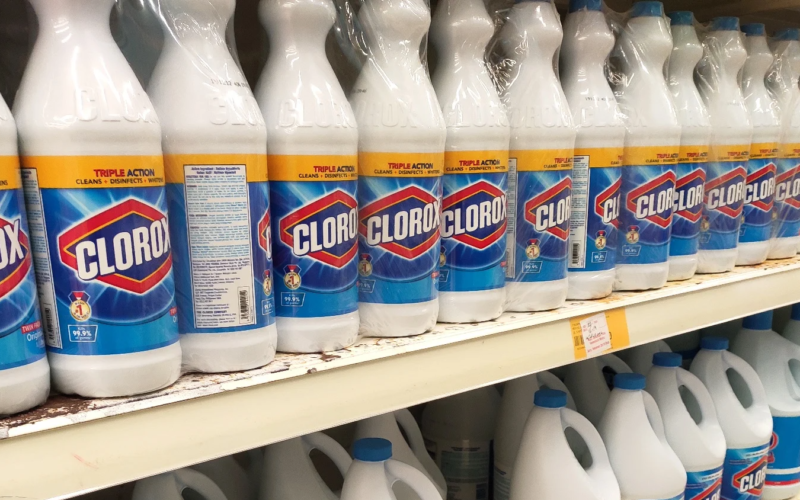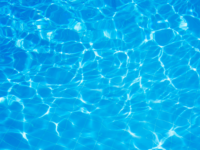After buying a pool, it’s time to take good care of it. At this point, there are a lot of questions about what products to buy and for what purpose. Many of us who don’t even own a pool know that chlorine is used for maintenance. At the same time, it is often mentioned that Clorox bleach is also used in the pool.
However, not everyone knows how to use it, the difference between bleach and chlorine, and whether or not you can use regular household Clorox bleach in the pool.
We’ve analyzed all of the most popular questions regarding the use of Clorox bleach in the pool and answered the following questions:
- Why use Clorox pool bleach?
- What is the difference between bleach and pool chlorine?
- How much Clorox bleach should be added to the pool?
- How often should you use Clorox pool bleach?
- Is it safe to use it?
Let’s get started.
Clorox bleach in the pool: Is It a Water Poison or a Useful Cleaner?

We suggest you start with a short theory. A swimming pool is an ideal breeding ground for bacteria, algae, and other microorganisms. There are three reasons for this:
- Heat. Bacteria are more active in water that has a bathing temperature (72-90°F).
- Debris. Outdoor pools are often left open and filled with leaves. Leaves and other debris are great food for bacteria.
- Sunlight. It stimulates algae growth.
It sounds like there will always be bacteria in the pool and you will never be able to deal with it. However, that’s not entirely true. In such cases, you need to use a product that can kill bacteria and algae. Any chlorine-containing product is great for this role, including your Clorox household bleach.
The chlorine particles break down the bacteria and then kill them. However, it is very important to follow the correct proportions and safety precautions, because chlorine can also harm your pool. Excessive dosing can result in low pH levels, the occurrence of plaque on the pool surface, and the appearance of skin irritation in pool users.
Clorox Bleach vs Pool Chlorine
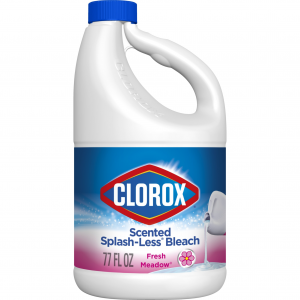
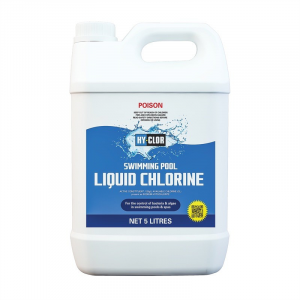
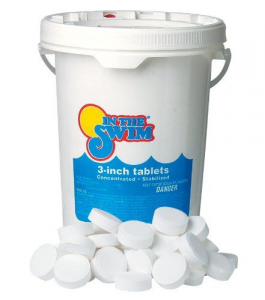
We have already mentioned before that any chlorine-containing products are suitable for pool cleaning. The main ones are chlorine and bleach. However, what is the difference between them?
Clorox household bleach and pool chlorine have the same chemical composition, the main element is chlorine. The only difference is that its concentration is different. Clorox bleach contains 5-6% while pool chlorine – 10-12%.
From this, you can conclude that you will need twice as much bleach as chlorine to clean your pool. However, other factors affect this, which we will tell you more about below.
Are Pool Chlorine and Clorox Bleach the Same Chemicals?
In addition to concentration, chlorine and bleach have other differences. You can find the former in tablets and liquid form. The difference is that the chlorine in the tablets or calcium hypochlorite also contains a stabilizer. This option best protects the chlorine from being destroyed by sunlight.
Calcium hypochlorite (chlorine tablets) has the highest concentration of chlorine, but it is a special product for cleaning swimming pools. It may not be available when you need it, unlike Clorox bleach or liquid chlorine which are usually at home for surface cleaning and disinfection.
We’ve prepared a comparison chart of these 3 products for your convenience.

Is Clorox Bleach Cheaper than Pool Chlorine?
To find out which chemical is cheaper, you need not just compare the price of Clorox bleach, liquid chlorine, and calcium hypochlorite per unit of product. Each chemical has a different cost, chlorine concentration, and requires a different dosage to add to the pool.
So we will take a pool of 10,000 gallons of water for comparison and write down how many ounces of each chemical need to shock the water at once. Then we will calculate the cost per use of the product and compare those numbers with each other.
We’ve taken the prices for the most popular products for each type of chemical from Amazon.

As we can see, the cheapest is calcium hypochlorite. It is 2.6 times cheaper than Clorox and 3.5 times cheaper than liquid chlorine. However, it has two disadvantages:
- The initial cost. It is 18 times more expensive than Clorox and 9.5 times than liquid chlorine. Not everyone is willing to pay that amount of money on a regular basis.
- Versatility. Clorox is literally in everyone’s home since bleach is often used for stain removal, disinfecting, and so on. However, calcium hypochlorite is a specific product that should only be purchased for pool cleaning.
Pros & Cons of Using Clorox Bleach in the Pool
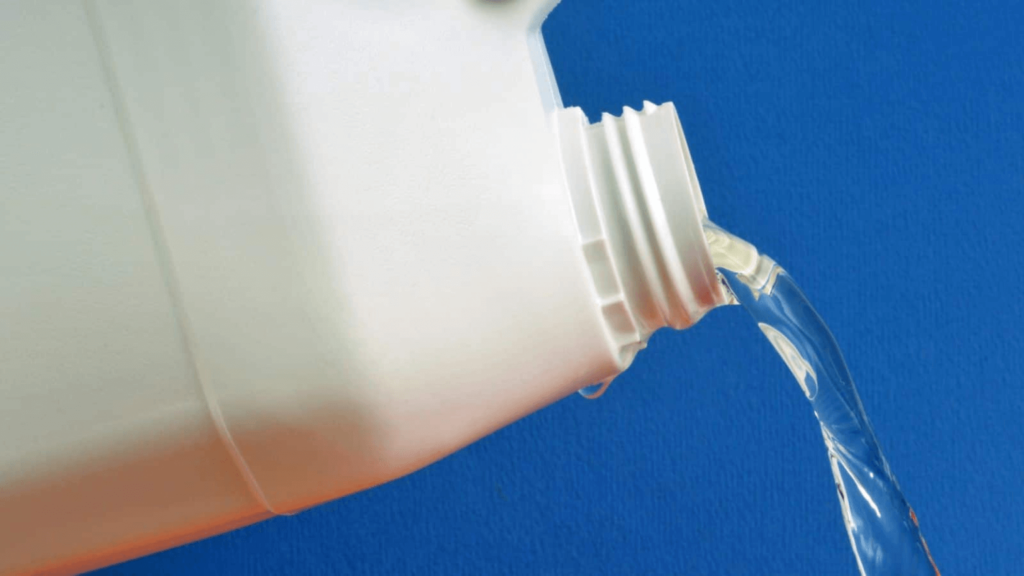
The most important advantage of Clorox bleach is its availability. You can find it in every store in the department of household chemicals and on every marketplace on the Internet. What’s more, bleach can already be in your home and you will not even need to buy it, because this chemical is often used to disinfect surfaces and for cleaning.
It’s also worth noting the shelf life of Clorox. The concentration of chlorine does not drop for 1 year, while liquid chlorine decreases by at least 60% in 6 weeks.
As for the disadvantages of using Clorox in the pool, they are associated with a high pH, which is 12.5. As we know, the allowable pH for a pool is 7.2-7.8. If this figure is much higher, you can start to have mold in your water. Also, chemicals will be less soluble. In this case, you can use muriatic acid to lower pH.
Pros
- Always on hand. Available in almost all stores.
- Price. A gallon of Clorox is 2 times cheaper than liquid chlorine and 18 times cheaper than calcium hypochlorite.
- Versatility. In addition to disinfecting the pool, it will also be useful in the home because it is used for disinfecting surfaces and cleaning.
- Shelf life. Does not lose the concentration of effective chlorine within 1 year.
Cons
- Chlorine concentration. Clorox has 2 times less chlorine concentration than liquid chlorine and 10 times less than calcium hypochlorite.
- High pH. Because of the high pH of 12.5, you may experience increased alkalinity when added to the pool. In this case, you can use muriatic acid in order to effectively lower pH in your pool.
How to Use the Clorox Bleach in the Pool?
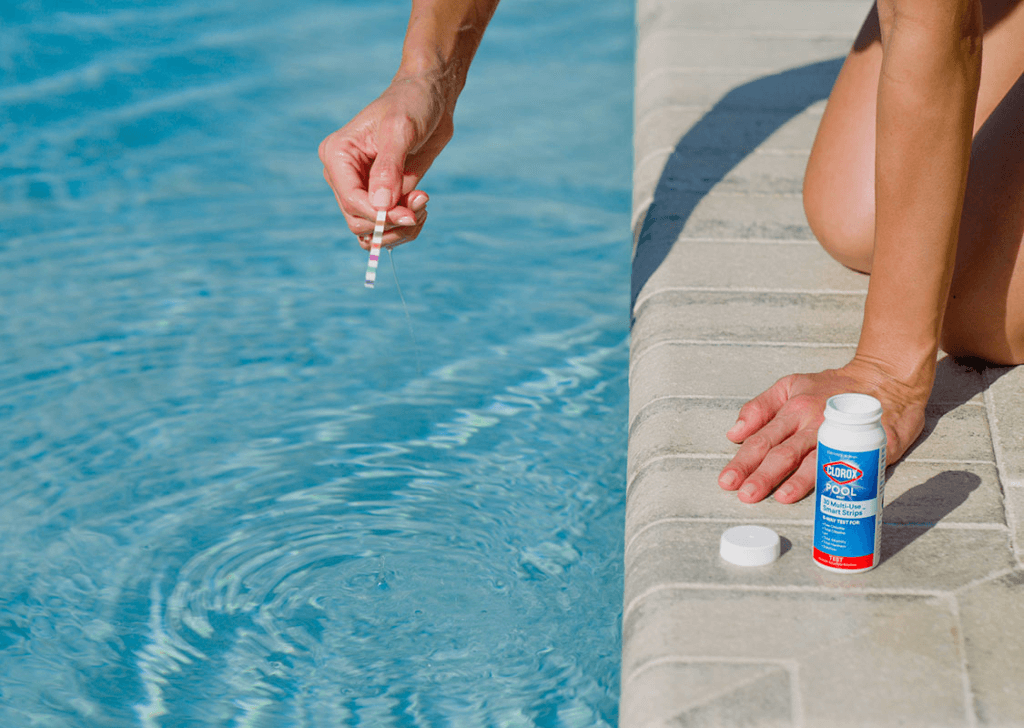
To effectively kill bacteria in your pool with Clorox, it is worth following certain conditions and an algorithm of action.
One of the main conditions is to perform the procedure in the evening. It is because during this time of day UV light is less dangerous for chlorine, which under its influence decays. It is also important to note that no one should swim in the pool during the disinfection.
Next, you need to follow the algorithm listed below.
- Check the pH level. It must be between 7-7.8. If it is lower, you will have to use more chlorine as the increased acidity increases the consumption of chemicals. If the pH is greater than 7.8, the chlorine will not dissolve well in the water and its effectiveness will be close to zero.
- Measure the water volume in your pool.
- Measure the water temperature. It should be between 50-86°F. Clorox dissolves more slowly in cold water and too warm water can cause a caustic odor.
- Pour the required amount of Clorox bleach into the pool and stir the water.
- Allow your pool to soak for 3 hours. If the water is still green after that time, repeat the procedure.
- When the water is clear, you need to check the chlorine content. It should not exceed 1.0-5.0
How Often Do I Need to Use Clorox Bleach in the Pool?
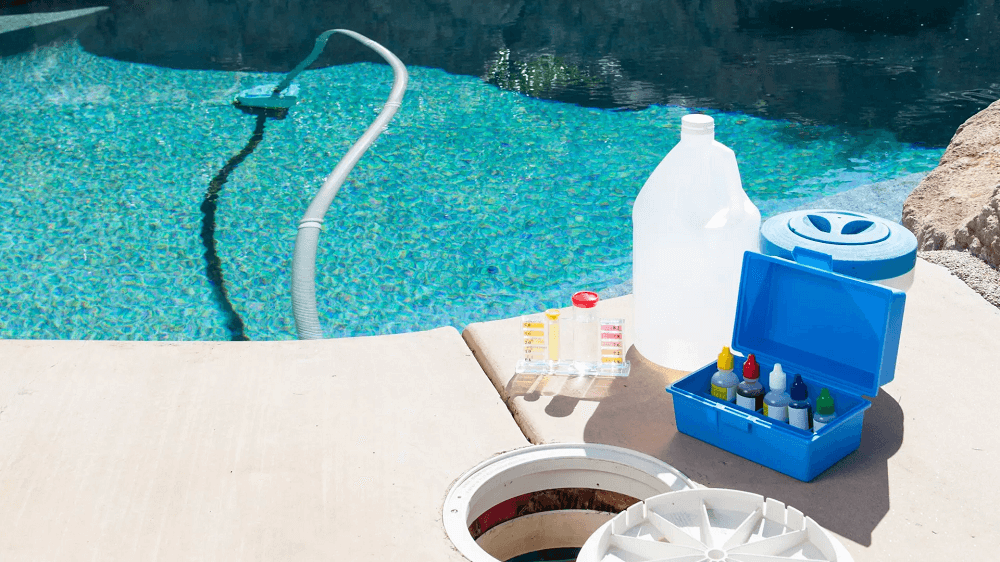
Depending on the quality of your pool water, you can apply regular or shock treatment with Clorox bleach.
- Regular. If your pool water is not green, you can chlorinate it 1-2 times a week. Measure the chlorine level in your pool with test kits beforehand. It should not exceed 1-5 ppm.
- Shock. Shock chlorination is a procedure in which a double or triple dose of chlorine is used to kill a large number of bacteria at once. This treatment should be done in two cases. In the first case, you need to do it once at the opening of the swimming season. In the second case, when the water in your pool has a green color and an unpleasant smell. In this case, you need to increase the dose of bleach by 2 times. After that, you can switch to regular therapy.
How Much Clorox Bleach Do I Need to Use in my Pool?
To know how much Clorox bleach you need to add to disinfect the pool water, you need to know two important things.
- The chlorine concentration. The concentration of chlorine is mentioned on the Clorox packaging. It can range from 5% to 6%.
- The volume of the pool. Usually, it is listed on the pool itself. If you don’t know it, you will need to calculate it.
Below we will give you a table detailing how much Clorox bleach you need to add to your pool to raise the chlorine level by 1 ppm.

If you have added too much Clorox bleach to the water, you can do the following:
- If your pool is outside, you can leave it in the sun for 10-12 hours. The UV light will neutralize most of the chlorine in the water.
- Drain some of the water and add a new one. You can do this until the test kit shows an optimal chlorine value of 1-3 ppm.
- Use a chlorine neutralizer, which is sold at specialty pool chemical stores.
- Use highly centered hydrogen peroxide (>60%). It is an antiseptic that can effectively kill bacteria. Highly-concentrated hydrogen peroxide can destroy even chlorine.
Is It Safe to Use Clorox Bleach?

Clorox Bleach is safe for use in water. However, problems can occur if you add too many chemicals. Below we list what this can lead to.
- Occurrence of plaque on the pool surface. White deposits may appear on the walls and floor of your pool. In this case, you can use products to remove white, lime, grease, and other types of plaque.
- Low pH level. The high concentration of chlorine in the water lowers the pH level. This increases the acidity of the environment, which can lead to the corrosion of equipment and pool walls. Frame pools and inflatable pools may also begin to have fading paint.
- The appearance of irritation in pool users. Swimmers who bathe in water with high concentrations of chlorine may experience skin and eye irritation, dry hair and skin, and allergic reactions.
Must-know Cautions Before Using Clorox Bleach

Before pouring Clorox Bleach into the pool you need to know the cautions for use. It is a chemical that can harm your health if used incorrectly.
- Avoid getting bleach on metals, nylon, wool, and silk. It can cause discoloration or corrosion.
- Avoid getting bleach in your eyes. If it does come into contact with your mucosa, you should rinse your eyes and see a doctor within 15 minutes.
- Avoid using bleach with other chemicals. It can cause a dangerous chemical reaction.
- Store bleach in a dark, cool place. When exposed to sunlight and heat, the substance releases a toxic gas that can cause respiratory tract burns.
- After the expiration date, the chlorine begins to decompose and lose its properties. Read the expiration date carefully before using, otherwise, the substance will be ineffective.
- If you dilute Clorox bleach, you need to use it within 24 hours. It is because diluted chlorine decomposes faster.
Summary

Clorox bleach in the pool is used to fight against bacteria and algae. It is essentially the same as liquid chlorine, because they have the same active ingredient, only in different concentrations. The bleach contains 5-6% chlorine, and the second chemical contains 10-12%.
You can use Clorox to disinfect your pool water, but you will need to add more of it than other chlorine-containing products. It is also important to calculate the proportions correctly to avoid overdosing, which can cause damage to the pool and harm your health.
All aspects concerning the use of Clorox bleach in the pool have been indicated in our article, and by reading them you will understand what it is, how to use it, how much to add, whether it is safe, and what are the cautions before using it.
Take care of your pool and it will give you an unforgettable vacation.
FAQ
🙋♂️ Can I use regular Clorox bleach in a swimming pool?
You can use Clorox bleach to disinfect your pool. Also in our article, you can find out how much to add for a certain volume of water.
❓ Is Clorox bleach the same as pool chlorine?
Clorox bleach and pool chlorine are essentially the same substances. The difference is that Clorox has 5-6% chlorine and the latter has 10-12%.
🧭 How long after putting bleach in the pool can you swim?
You need to wait about 3 hours, measure the chlorine level, and if it does not exceed 5 ppm, you can bathe.
